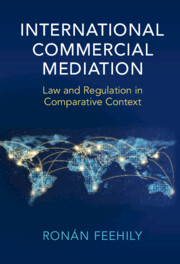117 results
1 - History
- from Part I - Contexts
-
-
- Book:
- The Cambridge History of Old Norse-Icelandic Literature
- Published online:
- 08 February 2024
- Print publication:
- 29 February 2024, pp 11-32
-
- Chapter
-
- You have access
- HTML
- Export citation
3 - Population, 1000–1500
- from Section II - The Medieval Economy, 1000–1500
-
-
- Book:
- An Economic History of the Iberian Peninsula, 700–2000
- Published online:
- 22 February 2024
- Print publication:
- 29 February 2024, pp 76-101
-
- Chapter
- Export citation
11 - Imperial Power, Tribal Settlement and Fiscal Revolts in the Early Islamic Delta (Seventh to Ninth Century CE)
-
-
- Book:
- The Nile Delta
- Published online:
- 15 February 2024
- Print publication:
- 22 February 2024, pp 397-420
-
- Chapter
- Export citation
8 - Growing with the Empire? From Village to Town
-
-
- Book:
- The Nile Delta
- Published online:
- 15 February 2024
- Print publication:
- 22 February 2024, pp 275-297
-
- Chapter
- Export citation
2 - The Frontiers of Youth
-
- Book:
- Frontiers of Empire
- Published online:
- 04 January 2024
- Print publication:
- 25 January 2024, pp 16-63
-
- Chapter
- Export citation
1 - Settler Colonialism and How to Tell a Story
-
- Book:
- Frontiers of Empire
- Published online:
- 04 January 2024
- Print publication:
- 25 January 2024, pp 1-15
-
- Chapter
-
- You have access
- HTML
- Export citation
Inequality or insecurity? The case of pre-colonial farming communities in southern Africa
-
- Article
-
- You have access
- Open access
- HTML
- Export citation
A British Labor Settlement Experiment and the Socioeconomic Experience of the Chuah Tamil Settlement in British Malaya
-
- Journal:
- International Labor and Working-Class History / Volume 105 / April 2024
- Published online by Cambridge University Press:
- 16 October 2023, pp. 120-134
-
- Article
- Export citation
2 - Pre-Prelude
- from Part I - Laying the Foundations for Global Society
-
- Book:
- Making Global Society
- Published online:
- 27 July 2023
- Print publication:
- 10 August 2023, pp 55-70
-
- Chapter
- Export citation
THE FIRST RADIOCARBON DATA FROM THE SETTLEMENT NITRA-LUPKA
-
- Journal:
- Radiocarbon , First View
- Published online by Cambridge University Press:
- 28 July 2023, pp. 1-9
-
- Article
-
- You have access
- Open access
- HTML
- Export citation
11 - The National Trilogy and Mining
-
-
- Book:
- The Cambridge History of the Australian Novel
- Published online:
- 28 June 2023
- Print publication:
- 27 July 2023, pp 183-200
-
- Chapter
- Export citation
Prologue - The Medieval Settlements in Greenland
-
- Book:
- The Vanished Settlers of Greenland
- Published online:
- 01 June 2023
- Print publication:
- 06 July 2023, pp 15-27
-
- Chapter
- Export citation
23 - Immigrant Cities since the Late Nineteenth Century
- from Part VII - Migrant Communities, Cultures, and Networks
-
-
- Book:
- The Cambridge History of Global Migrations
- Published online:
- 12 May 2023
- Print publication:
- 01 June 2023, pp 481-498
-
- Chapter
- Export citation
24 - Dynamics of Mobility and Settlement in Africa: The Horn of Africa, Thirteenth to Nineteenth Centuries
- from Part VIII - Settler Migration
-
-
- Book:
- The Cambridge History of Global Migrations
- Published online:
- 12 May 2023
- Print publication:
- 01 June 2023, pp 469-486
-
- Chapter
- Export citation
Opioid Litigation: Lessons Learned from a Retail Pharmacy Settlement
-
- Journal:
- American Journal of Law & Medicine / Volume 48 / Issue 4 / December 2022
- Published online by Cambridge University Press:
- 11 April 2023, pp. 472-480
- Print publication:
- December 2022
-
- Article
- Export citation
Disentangling vertebrate spatio-temporal responses to anthropogenic disturbances: evidence from a protected area in central Myanmar
-
- Article
-
- You have access
- Open access
- HTML
- Export citation
‘Connoisseurs of Stone’: Everyday Sarsen Stone in Neolithic Britain
-
- Journal:
- Proceedings of the Prehistoric Society / Volume 88 / December 2022
- Published online by Cambridge University Press:
- 08 November 2022, pp. 97-122
- Print publication:
- December 2022
-
- Article
-
- You have access
- Open access
- HTML
- Export citation

International Commercial Mediation
- Law and Regulation in Comparative Context
-
- Published online:
- 01 September 2022
- Print publication:
- 08 September 2022
2 - Natives and Newcomers, 1000–1661
-
- Book:
- A Concise History of Canada
- Published online:
- 12 August 2022
- Print publication:
- 11 August 2022, pp 36-69
-
- Chapter
- Export citation
13 - The Agricultural Economy
- from Part III - Structures and Processes
-
-
- Book:
- The Cambridge Companion to the Ancient Greek Economy
- Published online:
- 21 July 2022
- Print publication:
- 04 August 2022, pp 186-201
-
- Chapter
- Export citation



